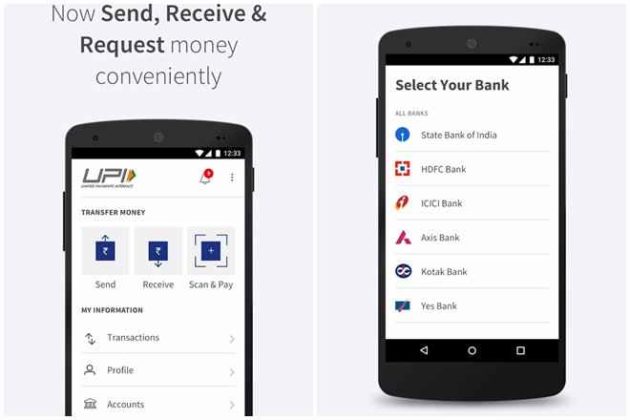In Nov 2016, the Indian Government demonetized INR 500 and 1,000 currency notes. This led to a majority of citizens opting to make payments via e-wallets like Paytm. Paytm allows users to make cashless payments in a jiffy.
The issue with e-wallets? They can only hold a limited amount of money. Users need to keep adding money to their e-wallets from their bank account on a regular basis.
What other options do users have?
In early 2016, the Indian Government launched the Unified Payment Interface (UPI) app. UPI is a direct bank-to-bank payment method. It does not need the payee’s bank account details to transfer money. UPI uses Virtual Payee Address (VPA) to complete transactions. VPA’s are like email ids. They can contain a user’s mobile number (123456@UPI) or a unique user name (XYZ@UPI).
Also read: India’s Unified Payment Interface app to use QR Codes
The phone number used in the VPA links to the user’s active bank account. Each time the user makes a transaction, the amount gets deducted from the linked bank account.
To further simplify digital transactions, the National Payments Corporation of India (NPCI) developed Bharat Interface for Money or BHIM. BHIM, launched on Dec 30, 2016 works on the UPI platform.
With BHIM, users can link many bank accounts. The app also allows transactions without extra charges. The payment’s amount gets credited or deducted straight from the user’s linked bank account. The BHIM app has a daily limit of INR 20,000.
How does the BHIM app work?
Here is a step-by-step guide on how the BHIM app works:
A. Setting up the BHIM app:

1. Download the BHIM app from Google Play store on your android smartphone
2. Allow the app to access to your SMS and phone
3. Giving the app the necessary permissions completes the process of verification
4. Register a four-digit passcode
Note: To avoid frauds, never share your passcode with anyone.
5. Confirm the registered passcode
6. You can now view a list of 31 banks on your mobile screen. Choose a bank that you hold an active account with. The app picks up your account information via a secure gateway
Note: Ensure that your bank account and BHIM app link to your mobile number
7. The app is now set up
B. Sending money using the BHIM app:

1. To send money, select the Send option on the app’s homepage
2. Enter the mobile number or payment address (VPA) of the payee
Note: The payee must be UPI registered.
3. Select the Verify option to verify details of the payee
4. Once verified, enter the amount you wish to transfer. You can also save the details to send the amount later
5. Enter your four-digit passcode for verification
6. The transaction is complete. You can view the details on your mobile screen
C. Receiving payments using the BHIM app:
BHIM users can receive payments through two modes:
- VAP or mobile number
- QR Code
The payee can share their VAP or mobile number with the payer to receive payments.
Users can generate a unique QR Code to receive payments. To make a payment, the payee can scan the QR Code.

BHIM also allows users to create a unique one-time-use QR Codes.
Within 5 days of its launch, BHIM recorded 3 million downloads and 500,000 transactions.
The BHIM app is currently available on Google Play store in devices using version 4.1.1 and above. The iOS version of BHIM is set to launch before Jan 10, 2017. The app is currently only available in English and Hindi. To make it easier for everyone to use, the NPCI plans to add more languages soon.
This is one way how India is using QR Codes for various use cases.
What are your views on the BHIM app? Share your thoughts in the comments section below.
